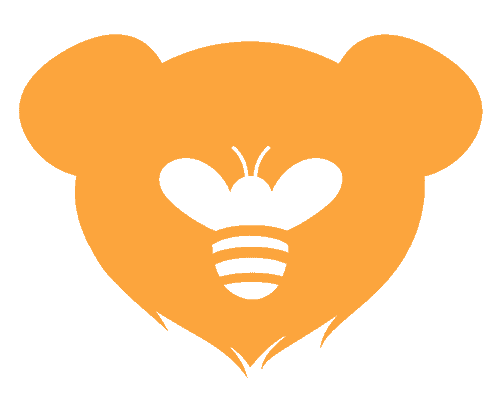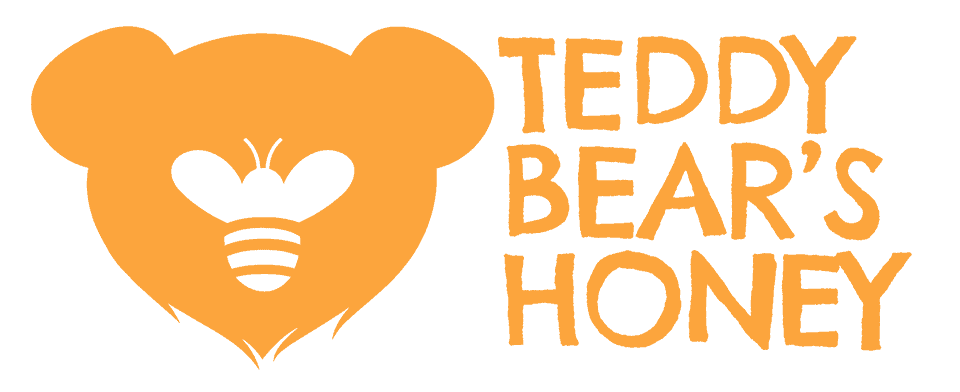During the spring and summer, tiny insects are often seen flying around flowers, searching for pollen and nectar. At times, we do see them but don’t always acknowledge the critical role some of these lovely creatures have on our ecosystem. One of these hard-working, loud, buzzing insects is the amazing queen bumblebee.
The queen bumblebee is responsible for bumblebee reproduction. Without her, bumblebees will not exist. She is fertilized by the male; she builds her nest for her brood, lays her eggs, collects food for her offspring, and during her 1-year lifecycle, will raise the next generation.
The queen bumblebee is an essential member of the colony, but how do we recognize her, where she builds her nest, and when she lays her eggs? And does she help with pollination? This article has amazing and interesting facts about the life cycle of the bumblebee queen.
The Importance Of The Queen Bumblebee To The Colony
More than 255 species of bumblebees are found worldwide, and 49 species can be found in the United States. These bumblebees have 3 classes of proboscis (tongue) lengths: short, medium, and long. They live in colonies and have an annual life cycle.
It starts with the queen bumblebee, who will mate with the male, find a nest to spill her eggs, and raise her brood. She will find nectar and pollen for herself and her offspring and, in this process, will be an excellent pollinator. Without the queen, the bumblebee population will cease to exist.
How To Recognize A Queen Bumblebee?
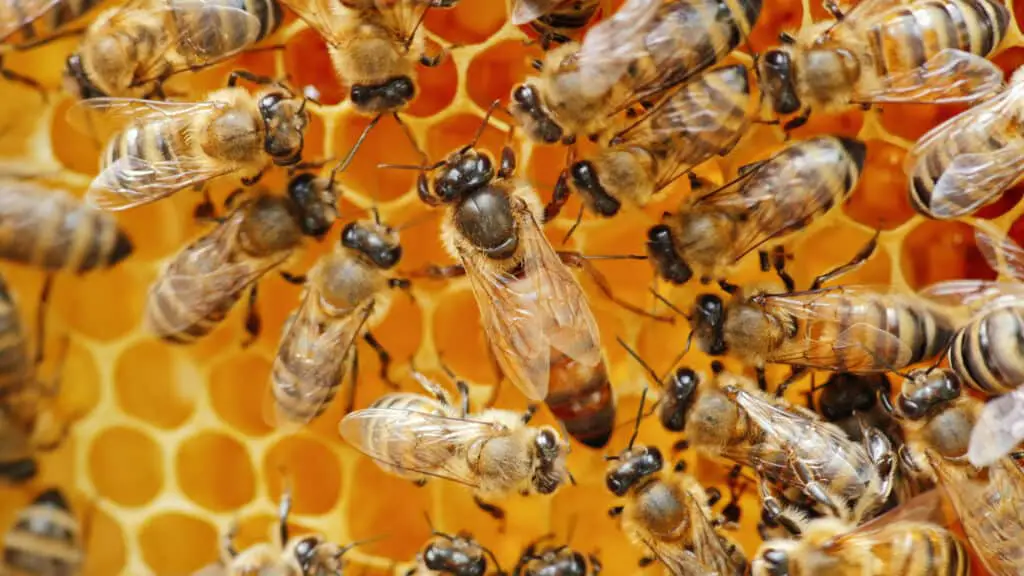
A queen bumblebee can be distinguished from the bees in the colony by her size, which is larger than the other bumblebees.
Size And Body Of The Queen Bumblebee
The queen’s size ranges between 0,83 to 1 inch (average size worker female 0,24 to 0,74”). The body of the bumblebee queen seems to be only one part as it is covered with branched hairs called setae that form a fuzzy layer or pile.
But in fact, her body is made up of three parts (head, thorax, and abdomen). She has a whitetail, and her appearance is similar to the worker bee, but she is much larger in size. Parts of her body are:
- The head is at the top of her body, where the eye and the antennae are located. The queen bumblebee has 12 segments on her antennae, whereas males have 13.
Her face, the underside of her body, and her legs are filled with tiny hairs. The outer mouthpart (mandibles) has a wide scoop-like shape and is used to protect her tubular proboscis that sucks up nectar.
- Attached to the middle section (thorax) are six legs, the forewings, and hindwings. The hindlegs of the queen and all females expand into a smooth arch-shaped form called corbicula. This corbicula is where all-female bumblebees collect pollen. If a bumblebee has this ball of pollen attached to the hindlegs, it is a female.
The queen has 4 wings; 2 tiny rear wings are attached to the 2 fore wings by rows of hooks (hamuli). The wings of the queen bumblebee move rapidly at an incredible 130 to 240 beats per second.
- The rear section (abdomen) is rounded, made up of six segments, and holds the queen’s digestive organs and her stinger on the end. Only a female bumblebee has a stinger. However, this stinger lacks barbs, so she can sting repeatedly.
Queen bumblebees are not out to sting; they usually only resort to this when disturbed or mishandled. In fact, she is a friendly insect.
The Life Cycle Of The Queen Bumblebee
A bumblebee queen usually lives up to 12 months. She will find a male to mate with during her lifespan, hibernate during winter, build a nest and make wax pots for her developing larvae, and rule her colony of female workers.
The Young Queen Bumblebee
A young queen will mate in the late summer and then hibernate throughout the winter, usually in the soil. Before this happens, the old bumblebee queen, her workers, and her male offspring will die, and only the fertilized queen (gynes) will remain in the nest.
The Mating Ritual Of The Young Queen
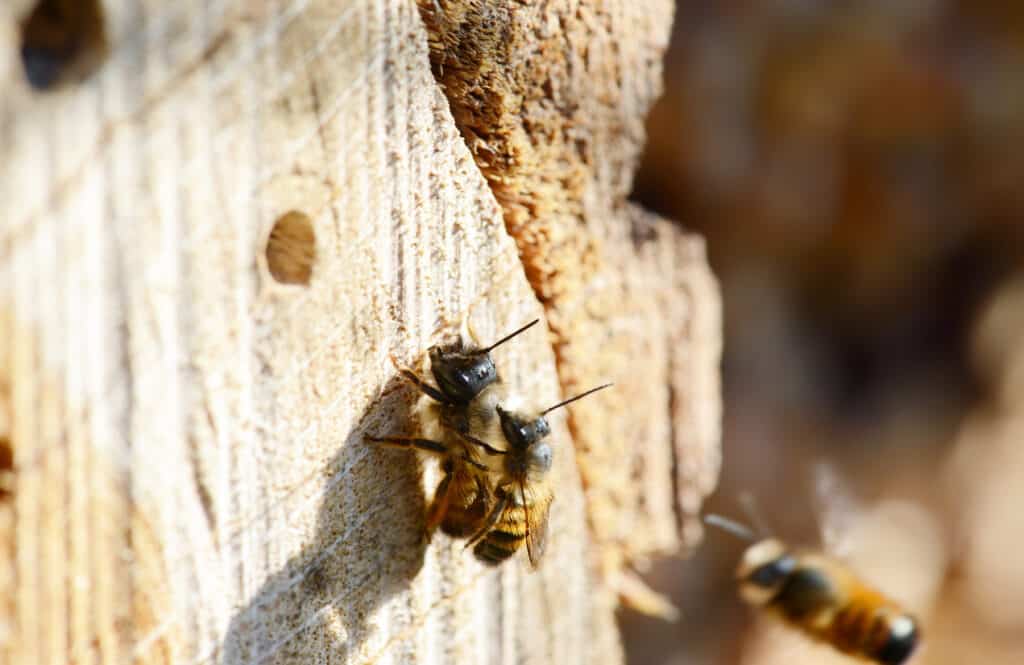
In the late summer, before the young queen hibernates, she will mate with a male. This mating ritual usually takes place in or close to the nest. The male will push the young female to the ground, climb on her thorax, and mate with her.
During this process, the queen protrudes her stinger so that the male can insert his genital capsule. Once inserted, the male falls back while remaining attached. The sperm is transferred within the first few minutes of mating. The male will then pump a sticking mixture into her genital opening.
This sticking plug takes time to harden, and mating will continue until the plug is firmly in place. This genital plug entirely or partially blocks other male sperm from entering for up to 3 days. The male will ensure that his sperm is securely embedded to make his mark on the next generation of bumblebees.
This is why the male and female remain attached for several minutes to over an hour. The queen will only mate with one male, but multiple mating has been recorded. Soon after the mating, the male will die, and the young queen will hibernate through the winter, and in the spring, she will make her nest and lay her eggs.
The Young Queen Bumblebee Hibernates
This overwintering or hibernation is a crucial phase when the young queen is most vulnerable. She must survive to begin a new bumblebee colony. Before the onset of the winter, the young queen would have eaten a lot of food, and her body would have become enlarged. This is how she stores fat in her cells to use during hibernation.
The Young Queen Bumblebee Wakes Up In Spring
She emerges from her dormancy in spring and will immediately start foraging for food. Since last summer, the young bee has not eaten, so she must find nectar to provide carbohydrates and protein-enriched pollen. The nectar will help her ovaries develop.
The queen bumblebee also needs food for warmth so that her flight muscles can reach a temperature of 30°C to be able to fly. She will continue feeding and, at night, will find shelter close to the food. Her shelter will be nooks and crannies until her body lets her know it is time to find a nest. At this stage, the queen bumblebee is on her own, just like the solitary bee.
The Young Bumblebee Queen Finds A Nest
Due to urbanization, vast areas of a bumblebee’s natural habitat have been destroyed, so finding places to nest has become increasingly scarce. Young queens will often fight over suitable nesting areas.
The Best Site For A Queen Bumblebee’s Nest
The young queen will look for a cavity to build her nest. This could be above the ground, such as in a hollow tree, rock walls, under grass, or even abandoned bird nests. But the queen will favor an underground nest.
An abandoned rodent hole is warm and already lined with fur, so she will gladly make this a home for her offspring. The queen will often opt for man-made structures such as a birdhouse or the cotton batting of old furniture.
Depending on the species of bumblebees, the availability of food, and other favorable conditions, her nest could grow between 50 and 500 citizen bumble bees.
The Queen Bumblebee Prepares For Her Offspring
Over the next few months, this busy queen will spend her time gathering food and preparing the nest for laying her eggs. You will often see a queen bumblebee carrying pollen on her legs as a sign that a new colony is in the making.
The Queen Bumblebee Builds Pots To Lay Her Eggs
The queen will secrete wax from the underside of her abdomen. She will use this wax to build pots to lay her eggs. She will gather nectar from flowers and bring this nectar back to the nest to fill these pots. The queen will eat from this nectar while she incubates her eggs.
The Queen Bumblebee Collects Pollen And Nectar For Her Brood
Once she has laid her eggs, her time will be spent gathering food and looking after her brood. The hatched eggs produce larvae that will feed on the pollen and nectar provided by their mother. The larvae grow into adult bees over 4 to 5 weeks, and once they no longer need to feed, the queen will lay a second batch of eggs.
The Queen Bumblebee’s Batches Of Offspring
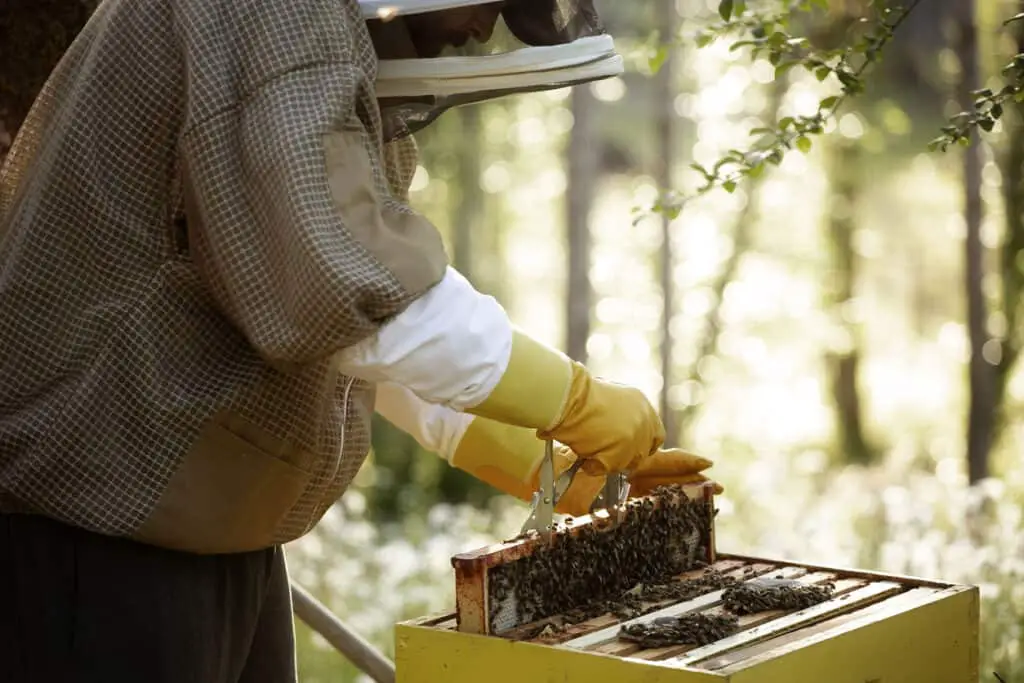
The clever queen bumblebees will produce eggs in batches in a specific order to keep the colony productive and to ensure the next generation of bees. The sperm from the mating is stored in a small container (spermatheca) located in the queen’s vagina.
When she lays her eggs, the queen will decide which to fertilize. The fertilized eggs will be the female workers, and the unfertilized will develop into males.
The Queen Bumblebee’s First Egg Batch Are Females
The first batch of young adults that transform from their metamorphosis cycle are all females. These females will gradually take over nest and foraging duties so the queen can solely focus on laying her eggs. From this time onward, the queen will not leave the nest.
The Queen Bumblebee’s 2nd Egg Batch Are Males
Now that the colony continues to grow, the queen bumblebee will start rearing males (drones) for the new year’s reproductive cycle. If resources and the hive are healthy, she might also produce female gynes to become the new queens. Gynes will leave the nest to forage for food and seek males to mate with.
However, some nests never reach this stage and will only produce young males who will leave the nest searching for females with which to mate. These males do not return to the nest but will sleep in the vegetation where females are known to frequent. The males do not live long and will soon die once they have mated with the females.
The Queen Bumblebee – End Of Life-Cycle
The queen bumblebee comes to the end of her life cycle when the eggs have all hatched and the young adults have begun their new life. Once the young female queens have mated and return to the nest to hibernate, the old queen and her female workers no longer have a job to do and will die naturally.
The old queen’s life was spent building a nest and a home in which she raised a new colony of bumblebees. Her life ends with the knowledge that the new young queen will continue the most important role of all queen bumblebees, producing new generations.
The Queen Bumblebee And Pollination
When the queen bumblebee forages for food and nectar for her nest, she is also doing another essential task, pollinating. She will not depend on any flower type to survive, but some plants rely on her and her workers for pollination.
Bumblebee queens and workers will also pollinate many crops. Plants that rely on the bumblebee for pollination are tomatoes, eggplant, and peppers.
The Queen Bumblebee’s Buzz Pollination
A bumblebee’s wings beat an astonishing 130 times per second! This ability, and because of their size, allows them to perform a unique service to aid pollination. The beating of their wings vibrates flowers until they release their pollen (buzz pollination). This process helps plants produce more fruit.
Due to their size, queen bumblebees can generate heat that allows them to fly earlier in the day and to cooler and higher altitudes, expanding their pollinating areas.
How Does The Queen Bumblebee Find Food?
The pollen will loosen and stick to the queen’s hairy body during buzz pollination. She will fill her corbiculae (pollen basket) with pollen moistened with nectar. The nectar helps to hold the pollen in place. These baskets are located on the hind legs and are only visible when filled with pollen.
Honeybees and bumblebees will often forage together, but the bumblebee queen and other female workers can detect which flowers have already been foraged by honeybees. This detection avoids wasting time looking for nectar on an empty flower.
Honeybees will leave a residue behind from the oil on their bodies. The bumblebees can detect this by using their sensory hairs. Queen bumblebees will also leave a scent mark on flowers they have visited. This scent is secreted from a gland in the tarsus (leg segment).
Is The Queen Bumblebee And Her Colony In Danger?
Many bumblebee species are vulnerable or near-threatened and are listed as endangered. Two of these are the cuckoo bumblebee and the rusty patched bumblebee. Many factors contribute to the decline of the bumblebee population.
Some scientists think a sickness may be killing these bees. Others believe it’s the pollution or global warming, and many say the lack of native flowers could be to blame!
Humans can play their part in helping these vulnerable insects before they all disappear. We would lose a friendly species that are detrimental to the survival of our crops and food.
Helping The Queen Bumblebee And Her Colony To Survive
Queen bumblebees need flowers to provide them with nectar and pollen to feed themselves and their colony. Here are some ideas on how we, the gardeners and concerned friends of the bumblebee, can help the queen and her hive survive in our harsh world!
Plant Bumblebee Friendly Plants
Planting flowers with short and open blooms will be easier to reach the nectar for the queen bumblebee with a short tongue. Flowers such as daisies will be a perfect fit. Other bumble bee species have long tongues and will enjoy reaching deeper into flowers like honeysuckle.
Plant Seasonal Flowers For Queen Bumblebees
Plant seasonal flowers in your garden so that the queen will have nectar throughout the seasons. Plants that will bloom from March through to September will be ideal for feeding bumblebees. You could plant as follows:
- In Early Spring – plant fruit trees such as apple, pear, plum, and cherries. Flowers include wild lilac, bluebells, pussy willow, California poppies, rosemary, and lungwort.
- In Late Spring – you can plant geraniums, honeysuckle, poppies, roses, salvia, and wisteria. Herbs such as sage, chives, and thyme are also favored by bumblebees.
- In Summer –Viper’s bugloss will bloom in July and August and is one of the plants that bumblebees are most attracted to. Plant other flowers such as sunflowers, delphinium, snapdragons, lavender, hollyhocks, cosmos, and cornflowers.
Fruit and vegetables like pumpkin, strawberry, melon, and zucchini will also attract the queen bumblebee.
Protect Nesting Sites Of The Queen Bumblebee
Go easy on your garden’s raking, tilling, and mowing until April and May, as bumblebee queens will be overwintering or hibernating. The fallen leaves are natural mulch and will provide cover for the bee. If mowing is necessary, make sure the blade is set high, so you don’t disturb this insect’s slumber.
She will be in an underground hole made by larger animals, compost piles, or soil just below the ground’s surface. Queen bees might also use cavities such as hollow logs or spaces beneath rocks to rest for the winter.
Don’t Use Pesticides Where Queen Bumblebees Forage
Avoid using insecticides and herbicides on plants and flowers, which are the feeding ground for the queen bumblebee. These products are long-lasting, and bumblebees and other pollinating insects will be exposed to the poison long after it has been applied.
8 Facts About The Queen Bumblebee
Below are 8 fascinating facts about the queen bumblebee:
- The queen, like all bumblebees, can control her body temperature. She will shiver her flight muscles in cold weather to warm herself. Her large body and hairy coat also help her stay warm.
- The queen and female workers will collect nectar and store it as honey in their small colony. However, they use it for feeding and not for hoarding in large amounts like honeybees do.
- Queen bumblebees make a hemispherical wax cup called a honeypot in which she lays their eggs.
- The queen can smell the nectar and any other attractive odor that a flower emits. She will also see the ultraviolet patterns on the petals of the flowers and, like many other insects, will follow these nectar guides when foraging for food.
- When visiting a flower, the queen vibrates her wing muscle and thorax so the flower will release the pollen. At the same time, she will make a buzzing noise which is quite loud.
The queen and female bumblebees use this buzz pollination technique to efficiently pollinate plants and crops. When they vibrate the flower, the pollen falls out and onto the bee, who will deposit some of this pollen onto the next flower she visits.
- The failure rate of bumblebee colonies is high, and not all nests will produce males and queens. Some nests will only produce queens, others only males. The successful nests will produce both males and queens, although studies have shown that 75% of colonies fail to produce new queens.
- The queen bumblebee secretes a pheromone to control the female worker bees by instructing them to raise the subsequent batches of fertilized eggs as worker bees. This pheromone and some form of aggression from the queen prevent the female worker from laying eggs. If some of them do lay eggs, the queen will eat these eggs.
This pheromone will wear off once the queen starts laying unfertilized male eggs. Any fertilized eggs laid by the queen after the absence of the pheromone are females. If these female larvae receive more food than usual, they will grow larger and be raised to be the new queens.
- Once the queen has produced males and hopefully some new female queens, it is usually a signal that the old queen is nearing the end of her life cycle. At the end of summer, when the new young queens are ready to hibernate, the old queen and the worker bees will die.
Conclusion
The queen bumblebee is the most crucial link in the life cycle of bumblebees. She builds a nest and lays the eggs that will grow into young adult bumblebees. These adult bees will reproduce and continue the cycle of raising future generations.
She rules her colony, and she decides which eggs she will fertilize to become female workers and which eggs will be raised as males. If she and her colony are strong and healthy, she will raise future queens.
During her long hours of foraging for herself and her brood, the queen will pollinate many flowers, crops, and plants. This most valuable and very clever lady is the amazing bumblebee queen!
